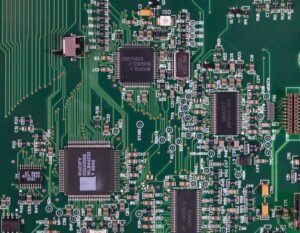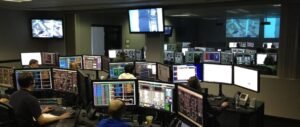What Is: Products and Reactants
In the world of chemistry and science, “products” and “reactants” are fundamental terms that describe the substances involved in a chemical reaction. Understanding these concepts is essential for comprehending chemical processes and their outcomes. Whether you’re a student, a science enthusiast, or simply curious about the world around you, this article will provide an overview of products and reactants and their significance in chemical reactions.
Key Takeaways:
- Products and reactants are substances involved in a chemical reaction.
- Reactants are the starting materials, while products are the end result of a chemical reaction.
- Chemical equations represent the conversion of reactants into products.
- Reactants may be consumed or transformed during a reaction, yielding new substances as products.
What are Products and Reactants?
In chemical reactions, **reactants** are the initial substances present before the reaction takes place. They are the **ingredients** that undergo chemical changes. On the other hand, **products** are the end result of the reaction, representing the **new substances** formed as a result of the chemical transformation process. Chemical reactions involve the conversion of reactants into products by breaking and forming chemical bonds.
Chemical reactions can be seen as a **recipe for transformation**, where reactants come together and rearrange their atoms to create new substances with different properties.
Representing Chemical Reactions
In order to express chemical reactions in a concise and systematic manner, chemists use **chemical equations**. These equations provide a **visual representation** of the reactants and products involved in a reaction. Reactants are written on the **left** side of the equation, whereas products are written on the **right** side. An arrow (**→**) separates the reactants from the products, indicating the direction in which the reaction proceeds.
Chemical equations serve as a **language** that allows scientists to communicate and understand the different components and outcomes of a chemical reaction.
Example: Formation of Water
Let’s consider a simple example: the formation of water (**H2O**) from hydrogen (**H2**) and oxygen (**O2**). The chemical equation for this reaction is:
2 H2 + O2 → 2 H2O
This equation states that **two molecules** of hydrogen (**H2**) react with **one molecule** of oxygen (**O2**), resulting in **two molecules** of water (**H2O**). The **reactants** are hydrogen and oxygen, while the **product** is water.
Reactants and Products Transformations
During a chemical reaction, reactants may undergo various transformations. They can be **consumed** completely, with all the reactant molecules being converted into products. Alternatively, only a portion of the reactants might transform, leaving **unreacted** materials behind. Additionally, **reactants can combine**, break apart, or rearrange their atoms to create different products.
Chemical reactions are dynamic processes where **atoms and molecules dance**, bonding and unbonding to form new substances.
Tables with Interesting Data
Here are three tables showcasing interesting data points related to products and reactants:
| Table 1: Common Examples of Chemical Reactions |
|---|
| Combustion of methane |
| Neutralization of acids and bases |
| Photosynthesis |
| Formation of rust |
| Table 2: Reactants and Products in Biological Reactions |
|---|
| Photosynthesis: Carbon dioxide, water, and light energy → Glucose and oxygen |
| Cellular respiration: Glucose and oxygen → Carbon dioxide, water, and energy |
| DNA replication: Nucleotides and DNA template → Two identical DNA molecules |
| Table 3: Balancing Chemical Equations | ||
|---|---|---|
| Chemical equation | Unbalanced equation | Balanced equation |
| 2 H2 + O2 → 2 H2O | 2 H2 + O2 → H2O | 2 H2 + O2 → 2 H2O |
| Fe + S → FeS | Fe + S → FeS | 2 Fe + 3 S → 2 FeS |
In Summary
Understanding the concepts of products and reactants is crucial for comprehending chemical reactions. **Reactants** are the starting materials, while **products** are the resulting new substances formed as a result of a chemical reaction. Chemical equations represent the conversion of reactants into products, providing a visual representation of the transformation. Reactants can undergo various transformations, potentially being consumed completely or partially transformed, resulting in different product substances.

Common Misconceptions
Misconception 1: Reactants are the same as products
One common misconception about reactants and products is that they are the same thing. In reality, reactants are the substances that are present at the beginning of a chemical reaction, while products are the substances that are formed as a result of the reaction.
- Reactants are consumed during the reaction.
- Reactants are typically listed on the left side of a chemical equation.
- Products are produced from the reactants through a chemical transformation.
Misconception 2: Products always have a higher energy than reactants
Another misconception is that products always have a higher energy than reactants in a chemical reaction. While this may be true for certain exothermic reactions, it is not the case for all reactions. Endothermic reactions, for example, absorb energy from the surroundings, resulting in products with higher energy than the reactants.
- Exothermic reactions release energy to the surroundings.
- Endothermic reactions absorb energy from the surroundings.
- The energy difference between reactants and products determines whether a reaction is exothermic or endothermic.
Misconception 3: Reactants can only be elements
Some people mistakenly believe that reactants can only be elements. However, reactants can be compounds, mixtures, or even ions. Chemical reactions can occur between different types of substances, and the reactants involved can be combinations of elements and compounds.
- Reactants include substances participating in a chemical reaction.
- Reactants can be either elements or compounds.
- Reactants can undergo chemical transformation to form products.
Misconception 4: Products are always useful or desirable
Many people assume that the products of a chemical reaction are always useful or desirable. While some reactions do produce substances that are valuable or beneficial, other reactions may give rise to byproducts or waste materials that are unwanted or even harmful.
- Not all reaction products have practical applications.
- Some products may be waste materials or byproducts.
- The desirability of a product depends on the particular application or context.
Misconception 5: The ratio of reactants to products is always 1:1
Lastly, a common misconception is that the ratio of reactants to products in a chemical reaction is always 1:1. However, this is not always the case. The stoichiometry of a reaction determines the appropriate ratio of reactants and products, which can vary based on the specific substances involved.
- The stoichiometry of a reaction determines the ratio of reactants to products.
- The ratio can be influenced by factors such as molecular structure and reaction conditions.
- The balanced chemical equation represents the correct stoichiometry for a given reaction.

State of Matter
In this table, we explore different states of matter and their properties. Understanding the various states of matter is crucial when discussing the reactants and products in chemical reactions.
| State of Matter | Description | Example |
|---|---|---|
| Solid | Particles tightly packed, maintain fixed shape and volume | Diamond |
| Liquid | Particles closely packed but can move, takes shape of container, has fixed volume | Water |
| Gas | Particles far apart and move freely, takes shape of container, no fixed volume | Oxygen |
Chemical Reactions
This table gives examples of different chemical reactions and the products and reactants involved. Understanding these reactions is essential for studying and manipulating chemical substances.
| Reaction Type | Reactants | Products |
|---|---|---|
| Combustion | Fuel and oxygen | Carbon dioxide and water |
| Acid-Base | Acid and base | Salt and water |
| Decomposition | Compound | Simpler compounds or elements |
pH Scale
The pH scale is used to measure the level of acidity or alkalinity of a substance. This table presents examples of substances with their corresponding pH levels. The reactants and products in chemical reactions can influence the pH of a solution.
| Substance | pH Level |
|---|---|
| Lemon juice | 2 |
| Water | 7 |
| Ammonia | 11 |
Endothermic vs. Exothermic Reactions
This table illustrates the differences between endothermic and exothermic reactions. Knowing the type of reaction is essential to understand how energy is transferred between the reactants and products.
| Reaction Type | Energy Transfer | Examples |
|---|---|---|
| Endothermic | Energy absorbed from surroundings | Photosynthesis |
| Exothermic | Energy released to the surroundings | Combustion |
Prioritizing Reactants
In chemical reactions, some reactants have higher priority over others, leading to specific outcomes. This table highlights the reactivity series of metals, indicating their order of reactivity.
| Reactivity Series |
|---|
| Potassium |
| Sodium |
| Calcium |
Factors Affecting Reaction Rate
Several factors can influence the rate of a chemical reaction. This table explores these factors and their impact on the reactants and products.
| Factor | Description |
|---|---|
| Concentration | The higher the concentration of reactants, the faster the reaction |
| Temperature | Higher temperature increases reaction rate |
| Catalyst | A catalyst speeds up a reaction without being consumed |
Stoichiometry
Stoichiometry is the calculation of reactants and products in a chemical reaction. This table provides an example of calculating reactants and products using stoichiometry.
| Chemical Equation | Reactants | Products |
|---|---|---|
| 2H2 + O2 → 2H2O | 4 molecules of hydrogen gas, 2 molecules of oxygen gas | 4 molecules of water |
Types of Chemical Reactions
Chemical reactions can be classified into different types based on their characteristics. This table presents examples of each type of reaction along with their reactants and products.
| Reaction Type | Reactants | Products |
|---|---|---|
| Synthesis | 2 elements or compounds | 1 compound |
| Double Displacement | 2 compounds | 2 different compounds |
| Single Displacement | Element + compound | Element + compound |
Molar Mass
The molar mass is the mass of a substance per mole. This table demonstrates the molar masses of different elements and compounds, providing essential information for calculating reactants and products.
| Substance | Molar Mass (g/mol) |
|---|---|
| Oxygen (O2) | 32 |
| Carbon dioxide (CO2) | 44 |
Understanding the concept of reactants and products is fundamental to delve into the realm of chemistry. The different tables presented here provide a glimpse into the various aspects of products and reactants, from the properties of different states of matter to the factors influencing reaction rates. By comprehending and applying this knowledge, scientists can manipulate chemical reactions to produce desired outcomes and further explore the possibilities offered by the world of chemistry.
FAQs: Products and Reactants
What Is a Chemical Reaction?
A chemical reaction refers to the process by which substances, known as reactants, interact with each other to produce new substances, known as products.
What Are Reactants?
Reactants are the starting materials in a chemical reaction that undergo chemical changes to yield new substances.
What Are Products?
Products are the new substances formed as a result of a chemical reaction. They are the end result of reactant interactions.
What Are the Types of Chemical Reactions?
The major types of chemical reactions include combination reactions, decomposition reactions, displacement reactions, and redox reactions.
How Can Chemical Equations Represent Reactions?
Chemical equations are a symbolic representation of a chemical reaction. Reactants are on the left side of the equation, while products are on the right side. The arrow indicates the direction of the reaction.
What Are Some Examples of Reactants?
Examples of reactants include substances like hydrogen gas, oxygen gas, sodium hydroxide, and hydrochloric acid.
What Are Some Examples of Products?
Examples of products include substances like water, carbon dioxide, sodium chloride, and ammonia.
What Happens to the Mass During a Chemical Reaction?
The law of conservation of mass states that mass cannot be created or destroyed during a chemical reaction. Therefore, the total mass of the reactants is equal to the total mass of the products.
What Is the Role of Catalysts in Chemical Reactions?
A catalyst is a substance that speeds up the rate of a chemical reaction without being consumed. It provides an alternate reaction pathway with lower activation energy.
How Are Reactants and Products Determined in a Reaction?
The reactants and products in a chemical reaction are determined through experimental observations, stoichiometry calculations, and theoretical predictions based on the reactants’ and products’ chemical properties.





